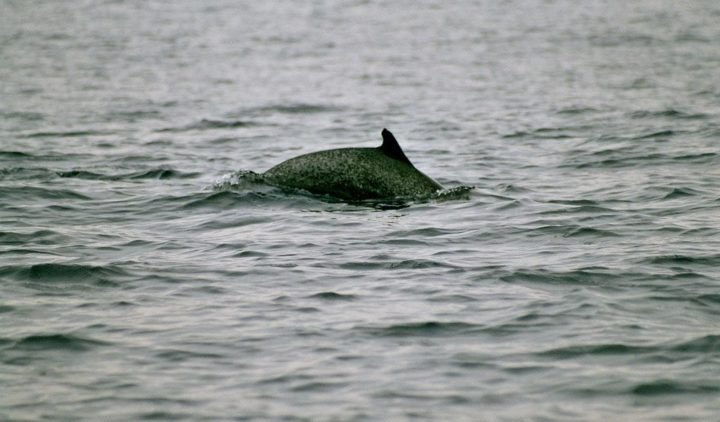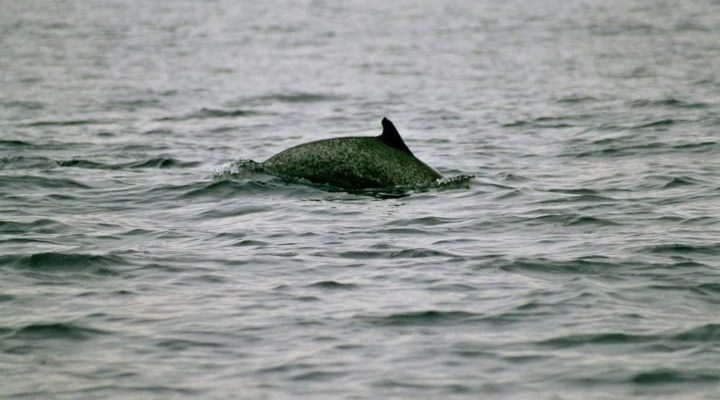
Bottlenose dolphins are found in a range of environments, from coastal waters to rivers and even some unique habitats. Think of them as the social butterflies of the ocean, adapting to various surroundings but always with a preference for warmer waters. Let’s explore the different places you can find these amazing creatures, which will allow you to appreciate the beauty of their habitats and the importance of their conservation.
Coastal Waters: The Popular Hangout
When you think of bottlenose dolphins, the first image that might come to mind is a sunny beach with dolphins playing in the surf. That’s because they’re commonly found in coastal waters around the world, particularly in warm, shallow areas. These habitats can be rich in food, providing dolphins with ample fish and squid to munch on.
Dolphins love to hang out near piers, bays, and estuaries where the water is calm and the food is abundant. In these areas, they often work together to herd fish, showcasing their incredible teamwork. You might catch them leaping out of the water, which isn’t just for fun—it’s a hunting tactic, allowing them to catch fish more easily.
Interestingly, they can often be spotted in places like the Gulf of Mexico, the Mediterranean Sea, and even the waters around Hawaii. Coastal regions make a perfect home for these dolphins, combining their need for food with social interactions.
Open Oceans: The Great Expanses
While bottlenose dolphins are famous for their coastal antics, they also journey into the open ocean. In deeper waters, they can swim several miles offshore, where food sources like tuna and mackerel abound. The ocean’s vastness offers them plenty of room to roam and thrive.
In the open sea, you might see dolphins swimming in groups, known as pods. These pods can range from just a few to over a hundred members! They enjoy each other’s company and develop strong social bonds. Here’s the thing: these dolphins are smart, and their social structures help them communicate and coordinate hunting strategies.
One fascinating aspect of their open ocean behavior is their migration patterns. While some pods stay resident in specific areas, others move with the changing seasons to follow food sources. This adaptability showcases their ability to thrive in various environments.
Rivers and Estuaries: Unique Habitats for Bottlenose Dolphins
You might be surprised to learn that bottlenose dolphins aren’t just ocean dwellers. They can also be found in rivers and estuaries, especially in areas where freshwater mixes with saltwater. These environments are typically brackish, meaning they contain varying levels of salinity, which makes them unusual but suitable for these dolphins.
One of the most notable populations of river dolphins is found in the Murray River in Australia. Here, dolphins have adapted to the unique challenges of river life, where they navigate through shallower and sometimes murkier waters. Can you imagine a dolphin swimming upstream? It happens more often than you think!
Estuaries, where rivers meet the sea, are especially important because they serve as nurseries for many fish species. This abundance of food attracts bottlenose dolphins, allowing them to thrive in these brackish waters. It’s a beautiful example of nature’s balance, as freshwater and saltwater environments support a variety of life.
Temperate vs. Tropical Waters: Where They Thrive
Now, let’s talk about the types of waters where bottlenose dolphins are most commonly found. These dolphins have a preference for temperate and tropical waters. Why does this matter? Well, it helps explain why you might see them in certain locations more than others.
In tropical regions, like Florida and the Caribbean, the warm temperatures support diverse marine life, making it an ideal feeding ground. Here, bottlenose dolphins can enjoy warmer water and plenty of food year-round. You might even spot them playing near coral reefs, showcasing their playful nature.
In contrast, temperate regions have marked seasons that influence the dolphins’ behavior and migration. For example, in colder months, some pods might move to warmer waters to find food, while others may stay put, adapting to the changing environment. This adaptability is key to their survival and illustrates their ability to thrive in diverse conditions.
Human Impact on Bottlenose Dolphin Habitats
As charming as bottlenose dolphins are, their habitats face many challenges. Human activities can significantly impact their living conditions, leading to a decline in dolphin populations worldwide. You might be wondering how exactly we affect these magnificent creatures.
Pollution is one major problem. Chemicals, plastics, and waste materials can contaminate their habitats, affecting their health and food sources. Dolphins are also vulnerable to boat traffic, which can disrupt their natural behaviors and cause physical harm. Imagine trying to swim and play while cars zoom by—it’s stressful!
Overfishing poses another significant threat. As fish populations dwindle, dolphins struggle to find enough food to survive. Land development, which leads to habitat destruction, contributes to these challenges, pushing bottlenose dolphins further from their natural habitats.
Conservation Efforts to Protect Bottlenose Dolphins
Thankfully, various conservation efforts are underway to protect bottlenose dolphins and their habitats. Organizations focused on marine life work tirelessly to promote awareness and create safe environments for these animals.
For instance, many coastal communities are implementing protected marine areas, where human activities are limited to reduce stress on dolphin populations. These areas can help ensure that dolphins have safe spaces to feed, breed, and socialize without the interference of boats and pollution.
Public education plays a crucial role as well. The more people know about how their actions impact dolphins, the more they can do to help. Simple changes, like reducing plastic use and being mindful while boating, can make a significant difference.
With ongoing efforts and our collective support, we can help ensure that future generations will have the chance to enjoy these wonderful creatures in their natural habitats.
Bottlenose dolphins are among the most fascinating creatures in our oceans, rivers, and estuaries. From their playful behavior in coastal waters to their adaptability in rivers, these dolphins showcase incredible diversity in their habitats. They remind us that nature is interconnected, and the health of one environment can significantly impact others.
As we learn more about where bottlenose dolphins are found and the challenges they face, we can appreciate not just their beauty but also the importance of protecting their homes. With ongoing conservation efforts and our commitment to preserving these marine landscapes, we can help ensure that bottlenose dolphins continue to thrive for years to come.
So, the next time you see a dolphin leaping through the waves or swimming gracefully alongside a boat, remember their fascinating habitats and the importance of keeping our oceans and rivers healthy.

